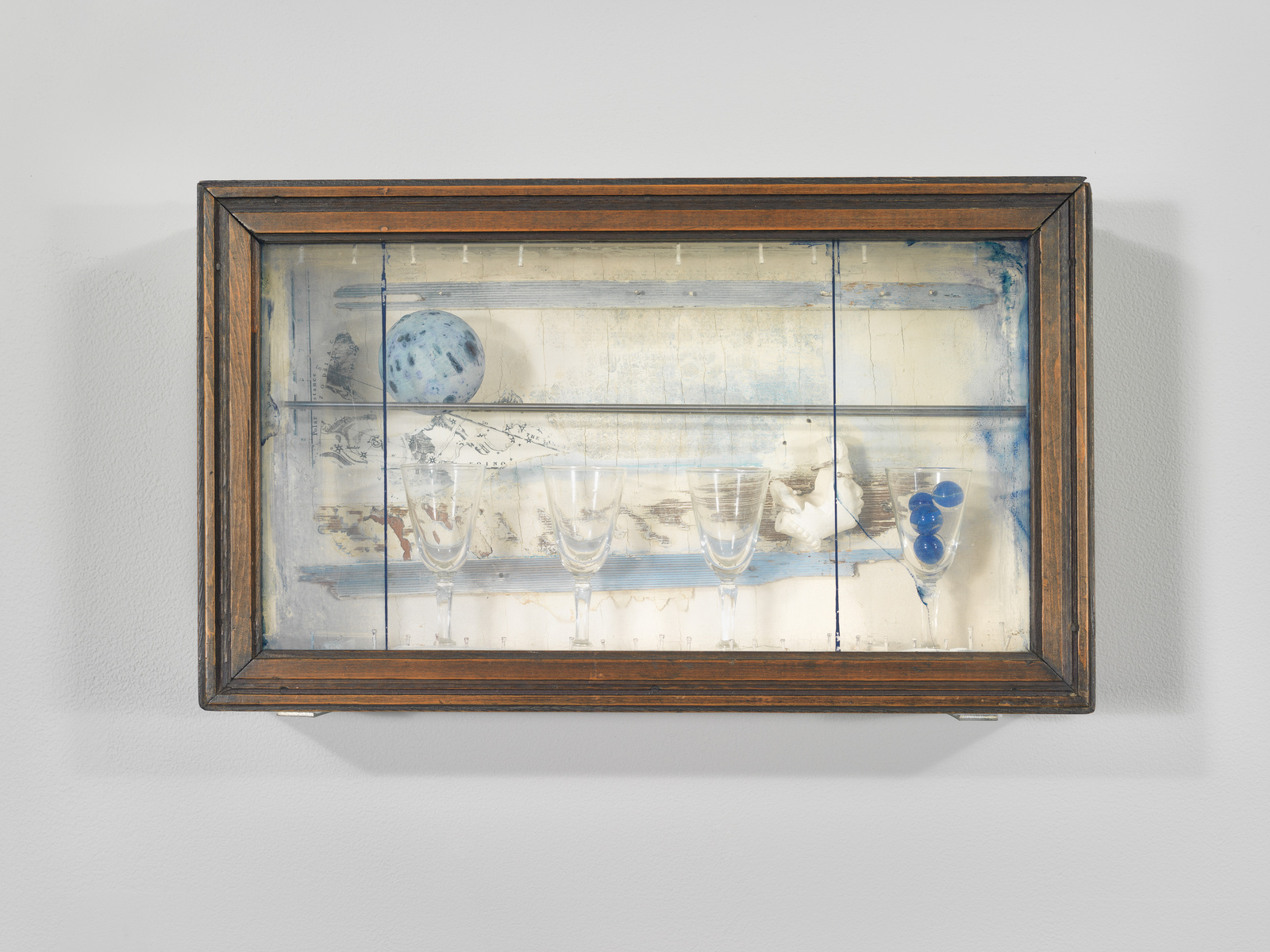Joseph Cornell was interested in the latest scientific discoveries, poring over articles and books on astronomy and regularly observing the constellations from his backyard, but in his art he preferred a simpler, more mechanical image of the universe. Celestial Navigation recalls the clockwork mechanism of an orrery—an eighteenth-century apparatus that explained the solar system with miniature revolving planets. Like an orrery, the box contains moving parts: the blue ball rolls along metal tracks and the marbles can be switched from one cordial glass to another. Cornell placed these movable orbs and a broken clay pipe in the form of a human head against a backdrop of “fixed” stars, fragmentary constellations pasted onto the walls of the box. In Celestial Navigation, Cornell invokes the myths, images, and theories once used to explain the predictable yet baffling patterns of the night sky. The box presents an ordered, though perhaps not entirely knowable, universe.
Not on view
Date
c. 1958
Classification
Sculpture
Medium
Assemblage of painted wood and printed papers, aperitif glasses, marbles, plaster head, painted cork ball, metal rods, brad nails and painted glass
Dimensions
Overall: 10 × 16 3/8 × 3 7/8in. (25.4 × 41.6 × 9.8 cm)
Accession number
92.24a-e
Credit line
Whitney Museum of American Art, New York; 60th Anniversary Gift of Estée Lauder, Inc.
Rights and reproductions
© The Joseph and Robert Cornell Memorial Foundation / Licensed by VAGA at Artists Rights Society (ARS), New York









